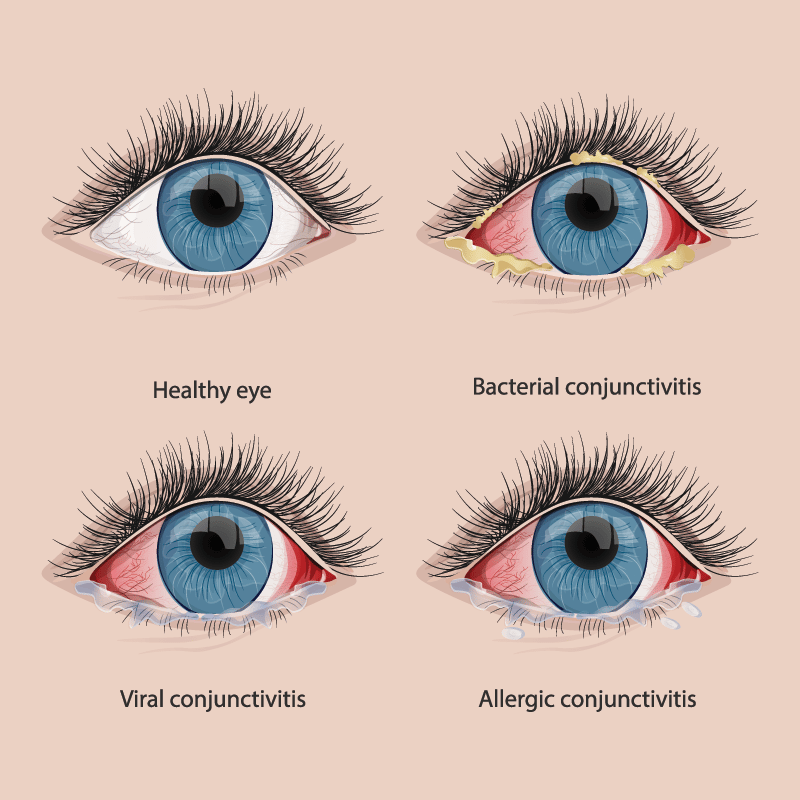Conjunctivitis is inflammation of the clear skin that covers the white part of the eye and the inside surface of the eyelids.

Symptoms of conjunctivitis can include redness, tearing, crusting, soreness, itching, swelling of the eyelids, foreign body sensation, discharge, and mild blurriness. Severe blurriness or pain could be a sign of a more serious problem and should be evaluated by an eye doctor immediately.
This is most commonly caused by an infection (viral or bacterial) or allergy, though many other eye problems can cause a red eye.
Viral conjunctivitis (also commonly referred to as “pink eye”) often begins with symptoms in one eye, then quickly spreads to the other eye within a day or two. It may last days to weeks and can sometimes be associated with a cold or upper respiratory infection.
Some forms of viral conjunctivitis can be very mild and short-lived, while other strains can cause a much more severe infection that lasts for weeks. Viral conjunctivitis is very contagious, so practicing excellent hygiene is imperative to prevent spread of disease to others.
Some tips include: frequent hand-washing, avoid touching your eyes, do not share towels or pillows, replace your cosmetics, replace your contact lenses and case, and consider staying home from school or work to minimize contact with others. Treatment of viral conjunctivitis includes cool compresses and artificial tears for symptomatic relief. The Wheaton Eye Clinic is a study center for the EYEnovation viral conjunctivitis clinical research trial, investigating a potential treatment for viral conjunctivitis. Learn more …
Bacterial conjunctivitis is another cause of conjunctivitis that is characterized by a thicker, pus-like discharge. The bacteria can come from infections elsewhere in the body, from an alteration in the balance of normal bacteria and immune defenses around the eye, or from an external source.
This can be treated with a variety of antibiotic drops and will often resolve quickly once treatment is initiated. Certain bacteria, such as Chlamydia, may cause chronic conjunctivitis that does not completely resolve with antibiotic drops and may need treatment with antibiotic pills.
Allergic conjunctivitis is characterized by itching as a prominent symptom and occurs most often in the spring and fall. Tearing, redness and eyelid swelling are also common and usually occur in both eyes. These symptoms may occur in conjunction with other signs of allergy such as sneezing, runny nose, congestion, and itchy nose and throat.
Treatment of allergic conjunctivitis includes allergy eye drops and cool compresses.
Keep in mind that not all red eyes are caused by infections and allergies. A red eye can be caused by many eye conditions, some of which can be serious, and should be evaluated by an eye doctor for proper diagnosis and treatment.
Wheaton Eye Clinic’s unparalleled commitment to excellence is evident in our continued growth. Today we provide world-class medical and surgical care to patients in six suburban locations—Wheaton, Naperville, Hinsdale, Plainfield, St. Charles, and Bartlett.
(630) 668-8250 (800) 637-1054